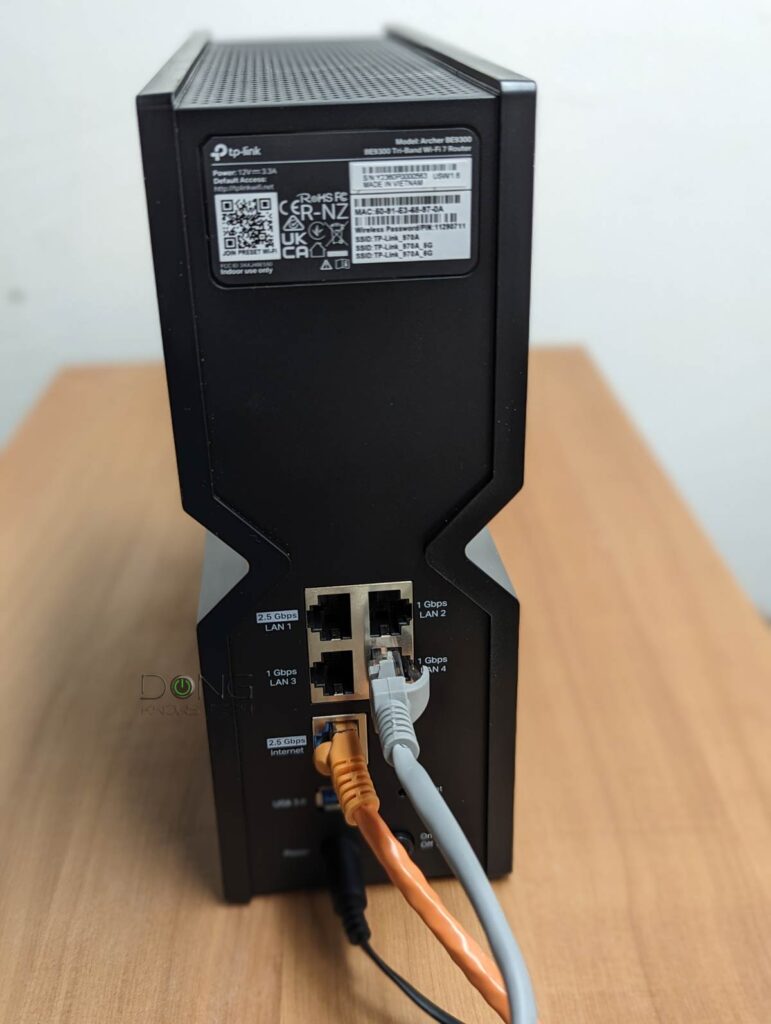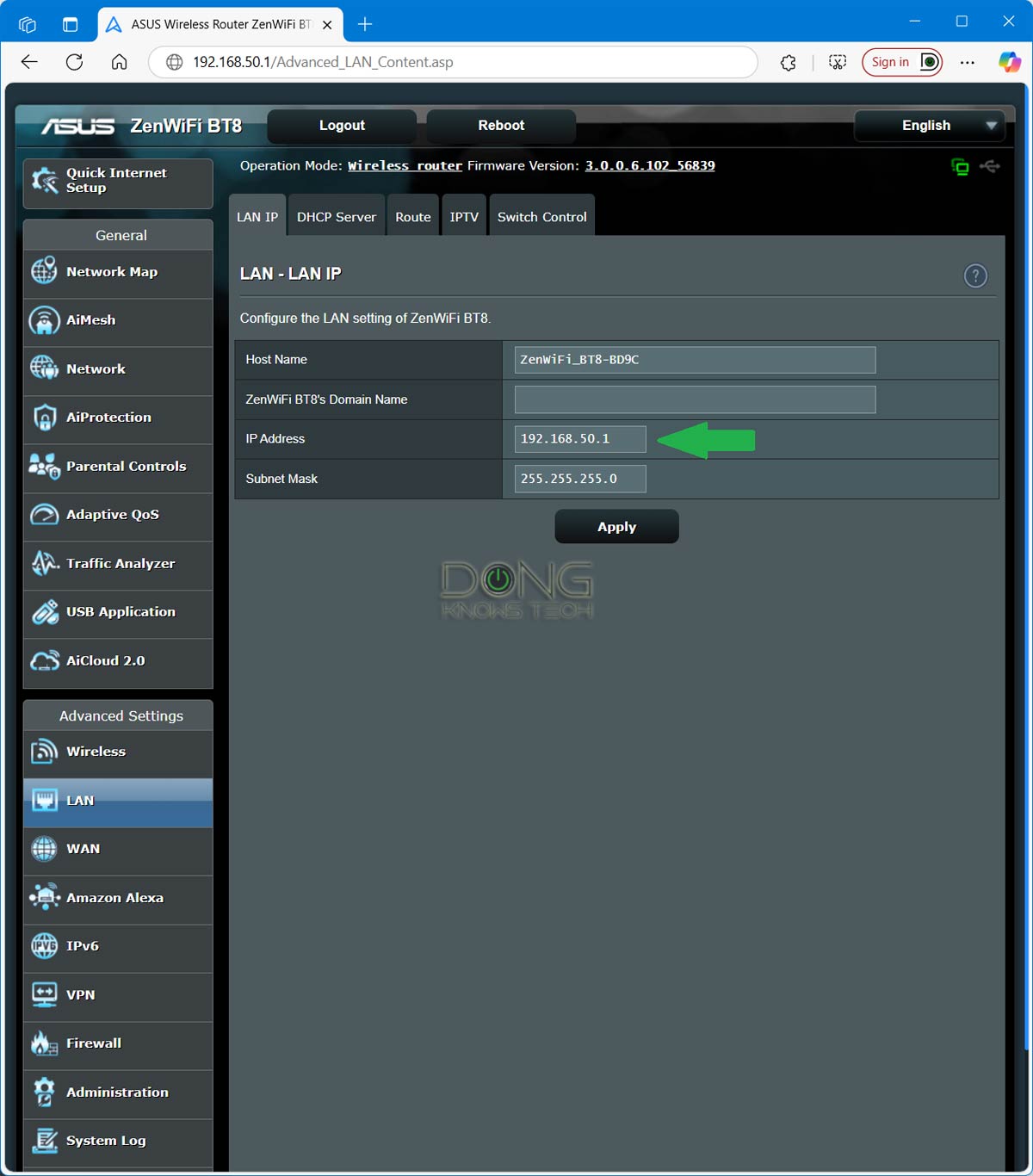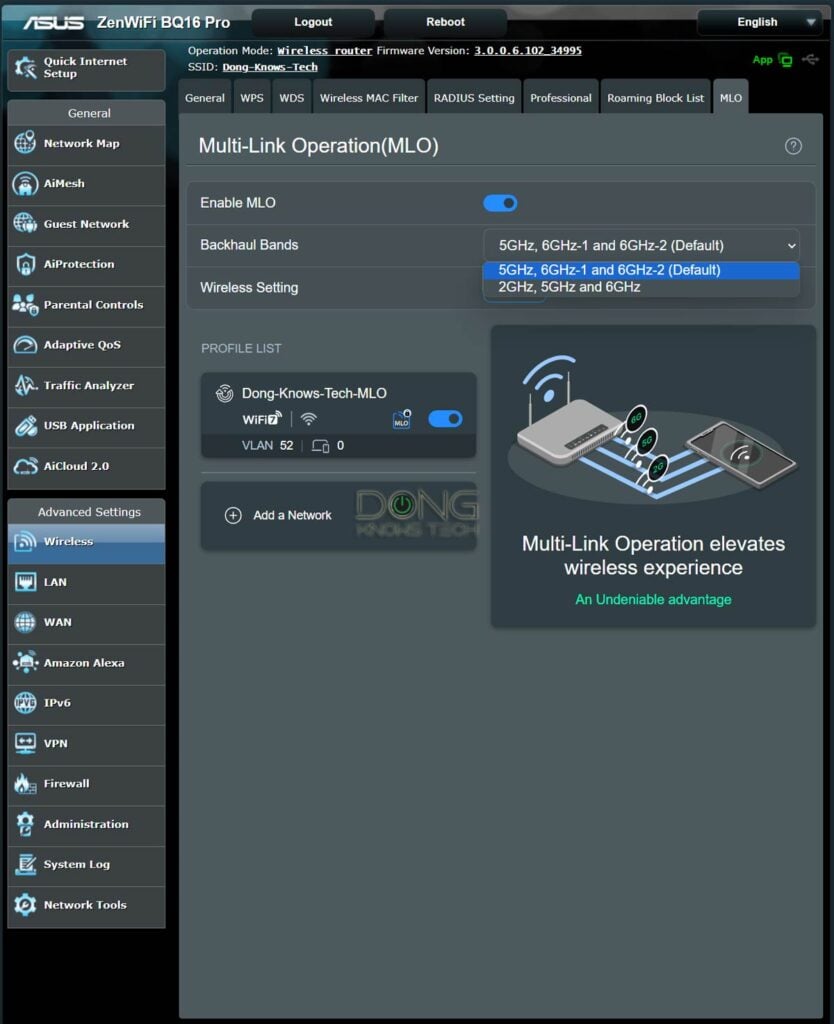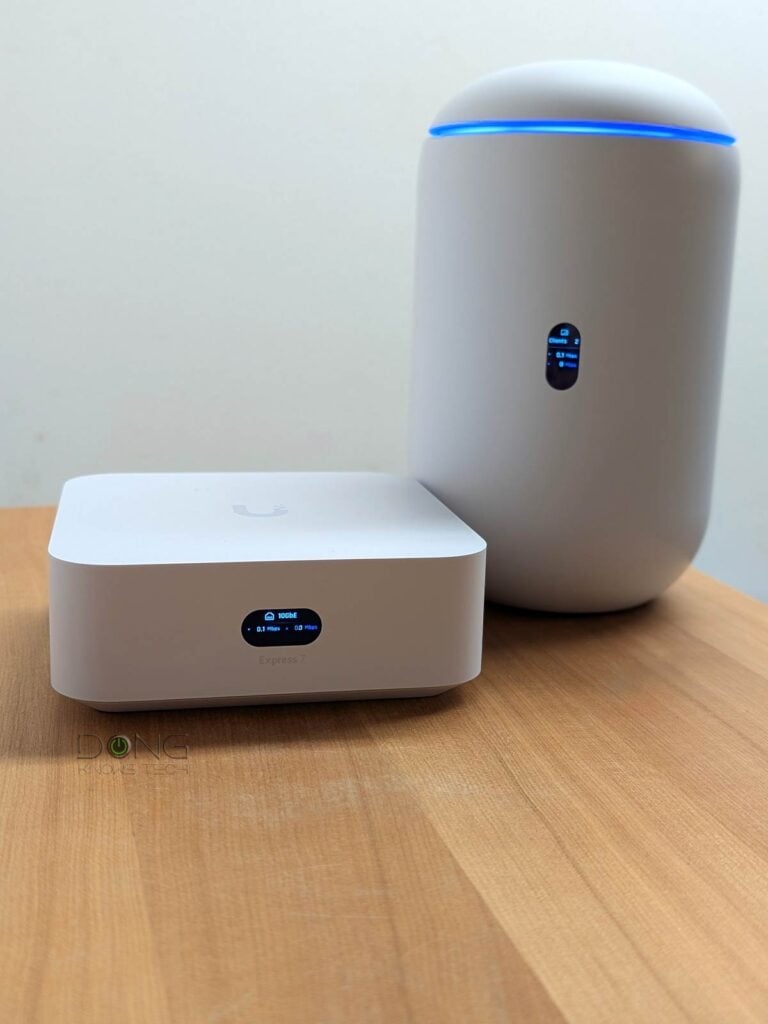If you have replaced a Wi-Fi router before, such as when you moved from an ISP-supplied gateway to a retail router, you already know how tedious the process can be.
Swapping one Wi-Fi router for another can be a pain when you have to reconnect many existing devices, especially those without a screen or a keypad, such as cameras, printers, or media streaming sticks, to the new network. And if you move to Wi-Fi 7, the higher security requirements only complicate things a little more.
But that pain can be avoided. The trick is to make the replacement Wi-Fi router (or the primary unit of a Wi-Fi system) replicate the network settings of the one it replaces. This post will be helpful when you’re ready to replace your current router.
Let’s dig in!
Dong’s note: I first published this post on December 30, 2023, and updated it on June 17, 2025, with the latest information.

Wi-Fi router swapping: The general tips on doing it without disconnecting existing devices
It’s not an exaggeration to say I’ve replaced hundreds of routers.
For this website alone, I test at least a few Wi-Fi broadcasters (routers, access points, and whatnot) a month and use a few dozen devices of all different types and Wi-Fi standards for the evaluation process. Many of these devices, such as IP cameras, are placed in hard-to-reach spots. It would take me hours to reconnect all of them to a new Wi-Fi network each time I test a new router. Therefore, automatically connecting existing devices to a new Wi-Fi router is, for me, a time-saving necessity.
With that street cred, I’d say that in most cases, reusing the Wi-Fi network and its password on the new router is all you need to make a smooth transition from one Wi-Fi router to another. However, depending on the situation, there might be more you’d want to pay attention to.
If you have a rich or complex network, some preparation is necessary, which brings us to the first tip on replacing a Wi-Fi router.
1. Gather the settings of the existing router
The first step you should take before moving to a new router is to collect the information about your existing one.
That generally means three items:
- Wi-Fi settings: These include the network names (SSIDs) and their corresponding passwords, as well as the authentication method. You may have just one Wi-Fi network or several for guests, IoT, and other purposes.
- Local network settings: This refers to the configuration of your current router, which in turn determines the configuration of your local network. This can include a lot of information or be simple, depending on your current network. That said, here’s the list in order of popularity.
- The Default Gateway IP address of the router.
- The IP Pool.
- Specific device-based settings, such as the current lists of IP reservations, port forwarding, or MAC address filtering.
- Back up the router’s settings to a file. This step is generally a good measure in case you want to reuse the old router at some point, or when you move to a new router that allows for the same-brand restoration as mentioned below
Let’s take a closer look at the first two.
Notes on Wi-Fi settings
Of the three above, #1 (Wi-Fi settings) is the most important as it allows existing Wi-Fi clients to automatically. It’s also the easiest to gather, as you only need to write them down via the infor on a connected client without needing to access the router’s web user interface. In this case, ensure that you do so precisely, as both are case-sensitive.


Note that the settings should remain the same as those of the previous router in the event of swapping or replacement. All of this information can be viewed from a connected client, but you can also see it in the router’s web user interface (or mobile app).
If you only care about Internet access, the Wi-Fi settings are all you need to transfer from your old router to the new one.
Tips
When it comes to passwords, it’s always about keeping them a secret that matters. Complexity is not always a positive attribute. The goal is to create a password that is both difficult to guess and easy to remember and use.
A Wi-Fi password that includes letters, numbers, uppercase and lowercase, and special characters can be a real pain, especially when you need to enter it into an IoT device, such as a printer or a media streamer—even a modern one like the Fire TV.
Generally, when it comes to Wi-Fi, it’s best to use a digit-only password. Here’s a way to make a password effective and easy to remember:
Pick a long sentence or phrase and use each word’s letter count to form the password.
If you use that previous sentence, the password would be 414833545652438—use another phrase for yourself. If you think you can’t remember the password, write that sentence down instead of the password itself.
Notes on network settings
The local network settings (#2) are necessary only if you want to keep your clients’ IP addresses intact or at least in the same subnet configuration, which is crucial if you have clients that use static IP addresses.
| Friendly URL (Internet connection required) |
Default IP (a.k.a Default Gateway IP) |
Username (no quotes) |
Password (no quotes) |
|
| Asus | http://www.asusrouter.com | 192.168.50.1 or 192.168.1.1 |
“admin” | User-created during initial setup |
| AT&T Gateway | n/a | 192.168.1.254 | n/a | Access code printed on the hardware unit |
| Comcast (Xfinity) Gateway |
n/a | 10.0.0.1 or 10.1.10.1 |
“admin”, “cusadmin” |
User-created during initial setup |
| D-Link | http://dlinkrouter.local | 192.168.0.1 or 192.168.1.1 or 192.168.200.1 |
n/a | “admin” or printed on the hardware’s underside |
| MSI | http://msirouter.login | 192.168.10.1 | “admin” | varies (printed on hardware) |
| Netgear | http://routerlogin.com | 192.168.1.1 or 10.168.168.1 |
admin | User-created during initial setup |
| Linksys | http://myrouter.local | 192.168.0.1 or 192.168.1.1 |
n/a | “admin” (must be changed during the initial setup process) |
| TP-Link | http://tplinkwifi.net | 192.168.0.1 | “admin” | |
| Ubiquiti (UniFi console) | https://unifi.ui.com | 192.168.1.1 or 192.168.1.1 |
User-created during initial setup | |
| Most Cable Modems | N/A | 192.168.100.1 | n/a | “admin”, “password”, “default” |
In this case, you’ll need to log into the router’s web user interface, accessible by entering its IP address into a web browser (such as Chrome, Edge, or Firefox), and note down the specific settings.
After that, note the router’s current LAN IP address (often called the Default Gateway address). This address determines the range of the IP pool.


Additionally, if you have entries for IP reservations, port forwarding, or MAC filtering, note them down as well. If you have special features such as VPN or Dynamic DNS, note down the information and disconnect those from the router.
Once you’ve completed all the above steps, it’s now time to configure the new router. The gist is to port the old router’s settings onto the replacement router.
2. Apply the settings to the replacement router
On the new router, program it with the information you’ve gathered above. Different router brands typically have distinct web user interfaces or mobile apps, but the underlying concept remains the same.
Apply LAN IP, IP Pool, and Wi-Fi settings
The first step is to set the new router’s LAN IP address to match that of the old router. After that, make sure its IP pool is also the same or larger.
After that program, its Wi-Fi network will be the same as that of the previous router, too. And that means:
- The same Wi-Fi network name (SSID) and the same password. Again, note that both are case-sensitive.
- The same authentication method and channel width. When in doubt or if there’s no option, select “Auto” for both.
After that, if you’re upgrading to Wi-Fi 7 from a previous standard, there are some extra steps.
Tips on moving to Wi-Fi 7
Upgrading to a Wi-Fi 7 router can be problematic. The older your current router is, the more complicated it may become, as chances are your devices are also outdated.
Wi-Fi 7 features a new MLO (Multi-Link Operation) capability. When turned on, often the default option, the router now always uses the highest Authentication Method. Consequently, its main (or primary) Wi-Fi SSID(s) will not work with many existing legacy devices, including many Wi-Fi 5 devices and all Wi-Fi 4 and older devices.


That said, keep the following two scenarios in mind:
- If you use a single router or a mesh with wired backhauling: Turn MLO off—in many cases, that means you don’t pick the default option to have it on during the initial setup process. Now, you can apply compatibility settings to the new router’s SSIDs.
- If you want to use MLO: Create a new SSID with this feature. After that, use additional (virtual) SSIDs (such as IoT or Guest Wi-Fi) to replicate those of your old router, including the lower security requirements. Most Wi-Fi 7 routers support multiple virtual SSIDs for backward compatibility.
The point is that the default settings of many Wi-Fi 7 routers can be incompatible with legacy devices, and this is also the case for any MLO-enabled SSID.
Apply special local network settings
Finally, when necessary, manually enter the IP reservation entries, as well as those for port forwarding and MAC filtering. Alternatively, you can also reprogram these once the devices are reconnected.
Finally, when applicable, manually enter the entries for IP reservations, port forwarding, or MAC filtering. After that, program the new route with the same VPN and Dynamic DNS settings.
Reset the old router to its factory default settings to avoid inevitable conflicts that may occur if the old router is plugged in again, even at a different location.
3. Router-to-router setting restoration via backup file
Certain router brands allow users a much easier way to move from one router to another. Examples of these are those from Asus, Ubiquiti, and Synology. Specifically, these router brands allow you to back up a router’s settings to a file and then load that file onto a replacement router. Now, all Wi-Fi and network settings will remain the same.
In this case, keep the following in mind:
- The replacement router and the old router typically require firmware of the same major release. In the case of Asus, the former typically needs to use the same or a newer major firmware version as the latter.
- After the restoration, adjust the settings to meet the new router’s model and Wi-Fi standard. Then (also on an Asus router), it’s a good idea to make a new backup file of the new router and restore that again on the new router to eliminate all potential problematic settings.
- Reset the old router to its factory default settings to eliminate the chance of conflicts.
Generally, with home-grade routers, while importing the settings of an old router into a new one is convenient, it’s best to set up a new router from scratch and enter the settings manually. With business-class routers, such as those from Ubiquiti’s UniFi product line, migrating from one router to another using the backup file is the norm and will work without any issues.


The final tip
There you go. The Wi-Fi router swapping job doesn’t have to be complicated. However, the interruption is inevitable—you have to remove the old and replace it with the new. This can be a drag if you have loved ones working from home and, for some reason, you can’t wait till everyone takes a break.
You can minimize this downtime by applying all the Wi-Fi router swapping tips above on the new hardware separately—the new router doesn’t have to be part of your network during the process. After that, once it’s ready, place it near the old router, turn it on, and wait for it to boot up fully. Then, quickly move the network cables from the old router over, starting with the WAN port.
If you time the process well, the actual downtime will be well less than a minute, enough to be unnoticed by the involved parties. It can be a fun challenge. I speak from experience.






